- info@redwoodlawnandlandscape.com
We specialize in designing and building sturdy, visually appealing retaining walls that enhance the functionality and aesthetics of your outdoor space. Whether you need to prevent soil erosion, create terraced gardens, or add definition to your landscape, our expert team delivers custom solutions tailored to your needs.


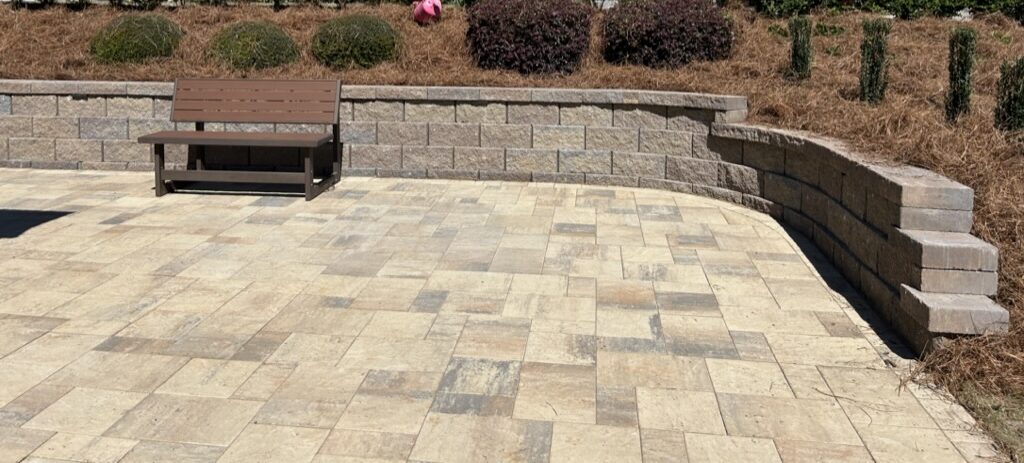
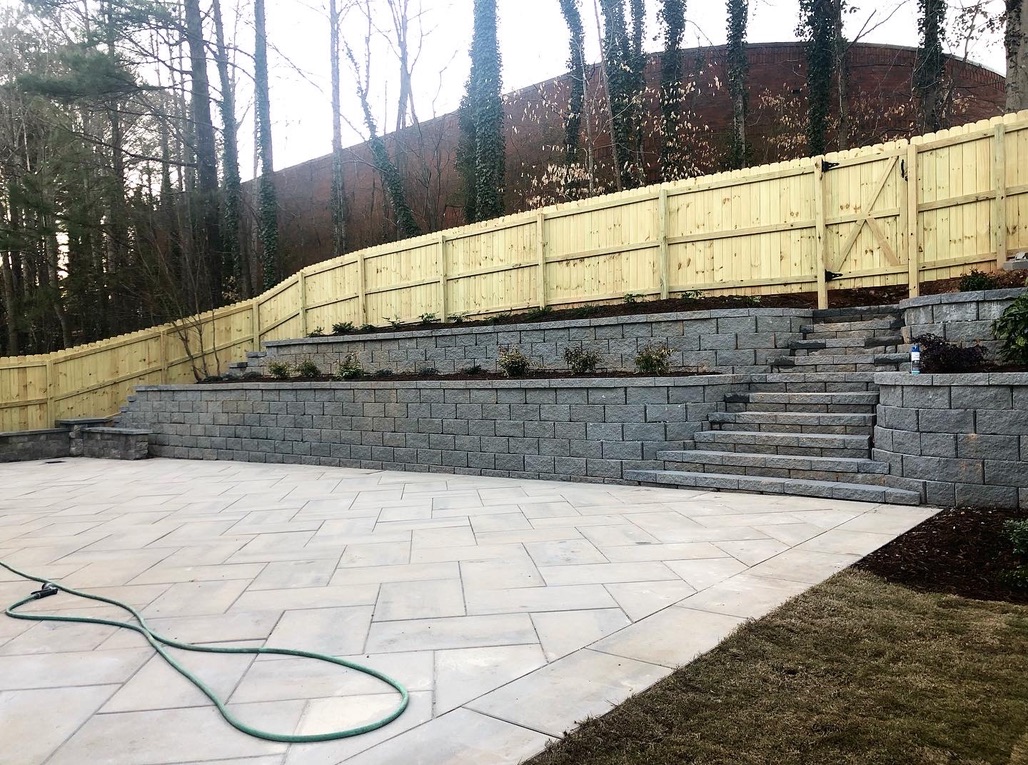
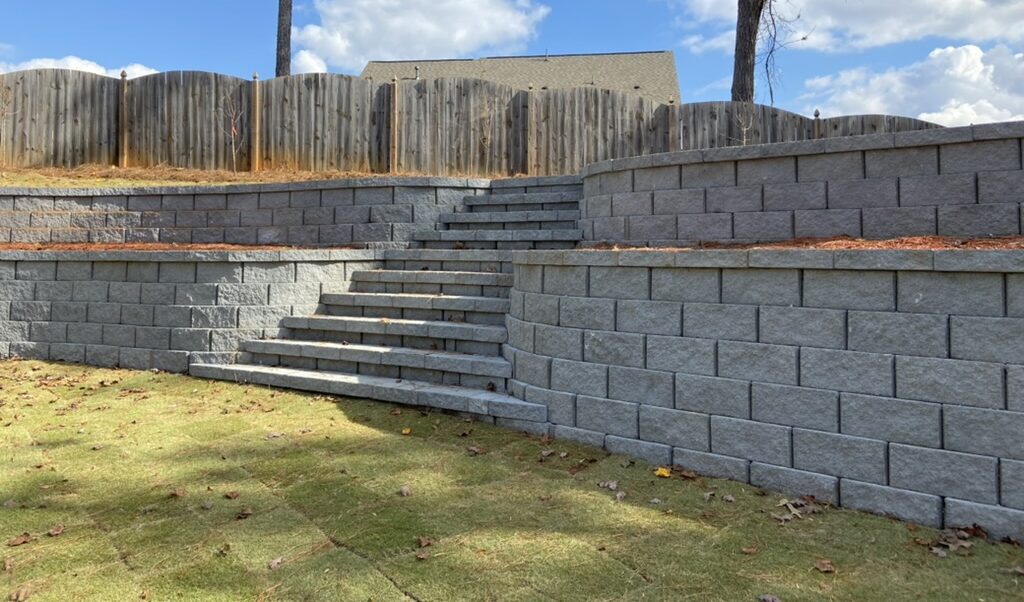
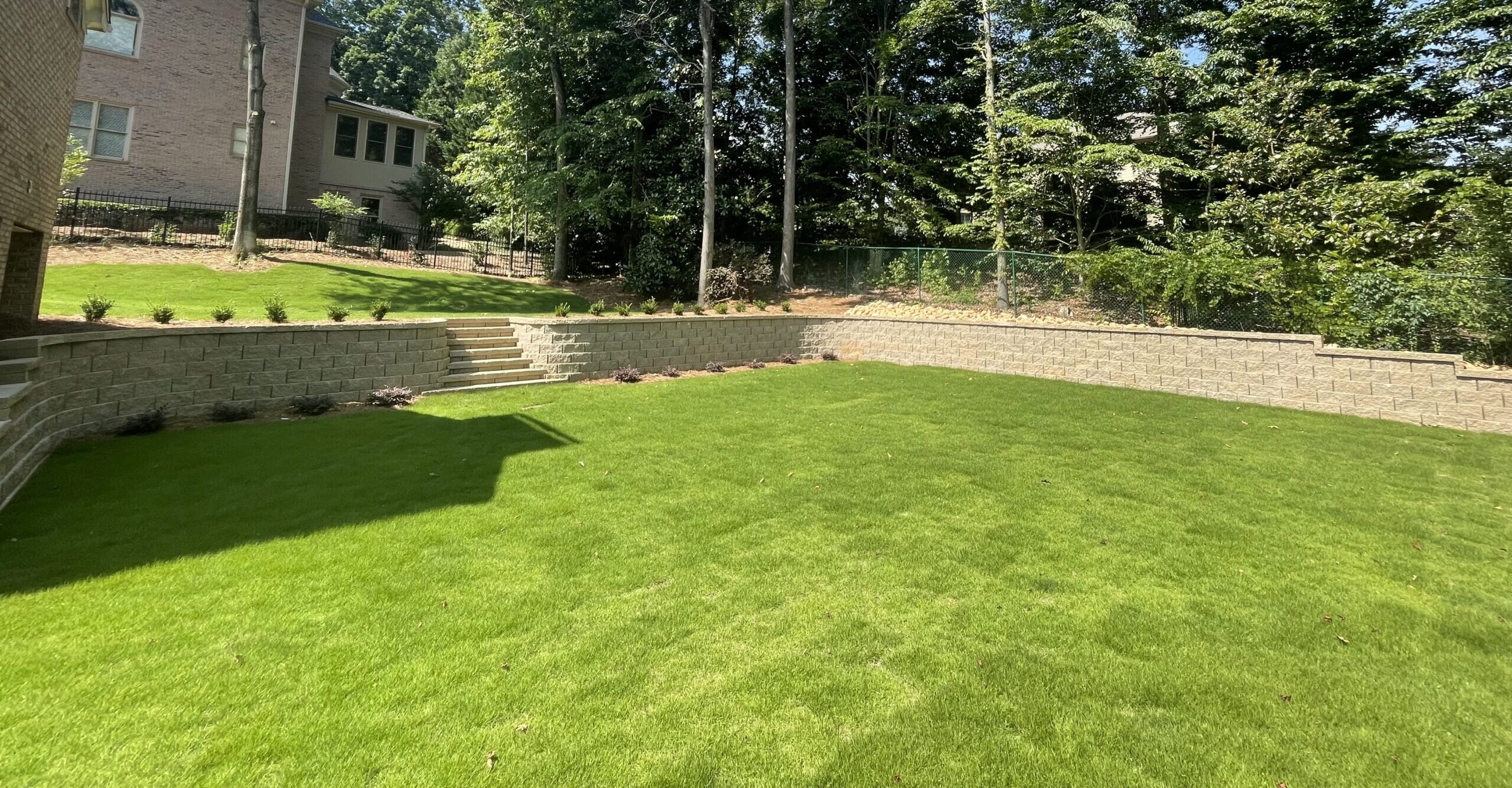
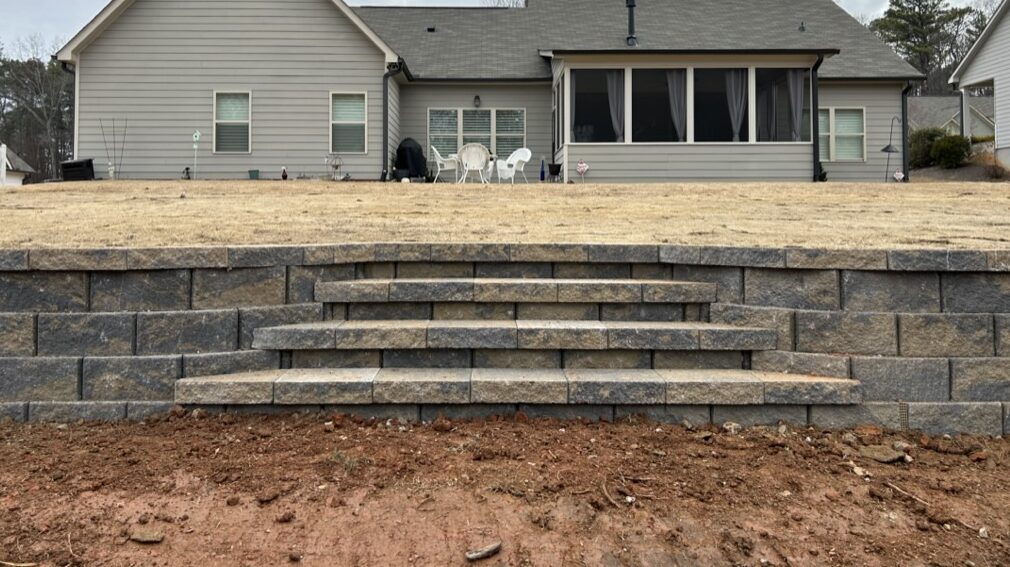
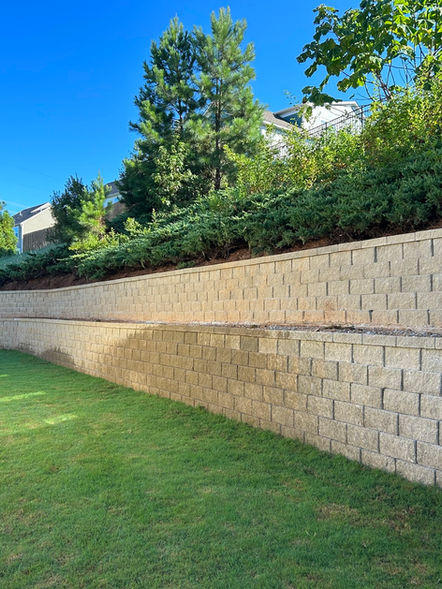
Before you choose any landscaping company, make sure they’re building retaining walls correctly!
A proper wall should sit on a four-to-six-inch (or more!) gravel base buried in a trench that stabilizes the wall. We also bury at least half of the first row of block. The more material you have under the surface, the stronger your wall will be!
It’s also important to realize that retaining wall blocks come hollow. This makes them cheaper and easier to move, but if you leave them as-is, you risk building a wall that will fall down at the slightest sign of stress. Think about it: would you trust a hollow wall? We core fill every block to make sure you have a tight, strong, compact wall. Some contractors skip this step.
If you’re building a wall on the slope, it becomes very easy to undermine if it isn’t built and buried correctly. Remember, there’s very little dirt on the other side of the hill to hold the wall and keep it still. We factor these details into our quotes.
For larger or more structural walls, we also install geo-grid fabric between every two rows of blocks into the hillside to further stabilize the wall. The geo-grid acts as an anchor, ensuring the force the hill exerts is spread out rather than being applied directly to the wall. The geo-grid makes the wall much stronger.
And if your wall needs permitting, we’re happy to assist in that process.
Our standards are unwavering, so our prices are never the cheapest. But our walls are the strongest.
Consider what you may be giving up before you prioritize savings.

It’s not always easy to know when you need a retaining wall.
Clients often call us to request a wall specifically. We’re not going to quote right away, nor will we take your money right away. This is a big project. There’s no harm in slowing down a little.
We take a look at your yard and ask you some questions.
Sometimes, we save clients thousands of dollars by showing them less expensive ways to solve their problems or by helping them understand why they don’t need a wall at all. Sure, it means less money for us, but we believe in taking care of our clients and building life-long relationships.
Not sure if you want a wall? Call us, and we’ll talk about it!
Service Area: We serve Hoschton, Braselton, Auburn, Winder, Bethlehem, Jefferson, Dacula, Lawrenceville, Buford, Duluth, Cumming, Suwannee, Flowery Branch, Loganville, Grayson, Monroe, and any other city within one hour of Braselton, GA.
